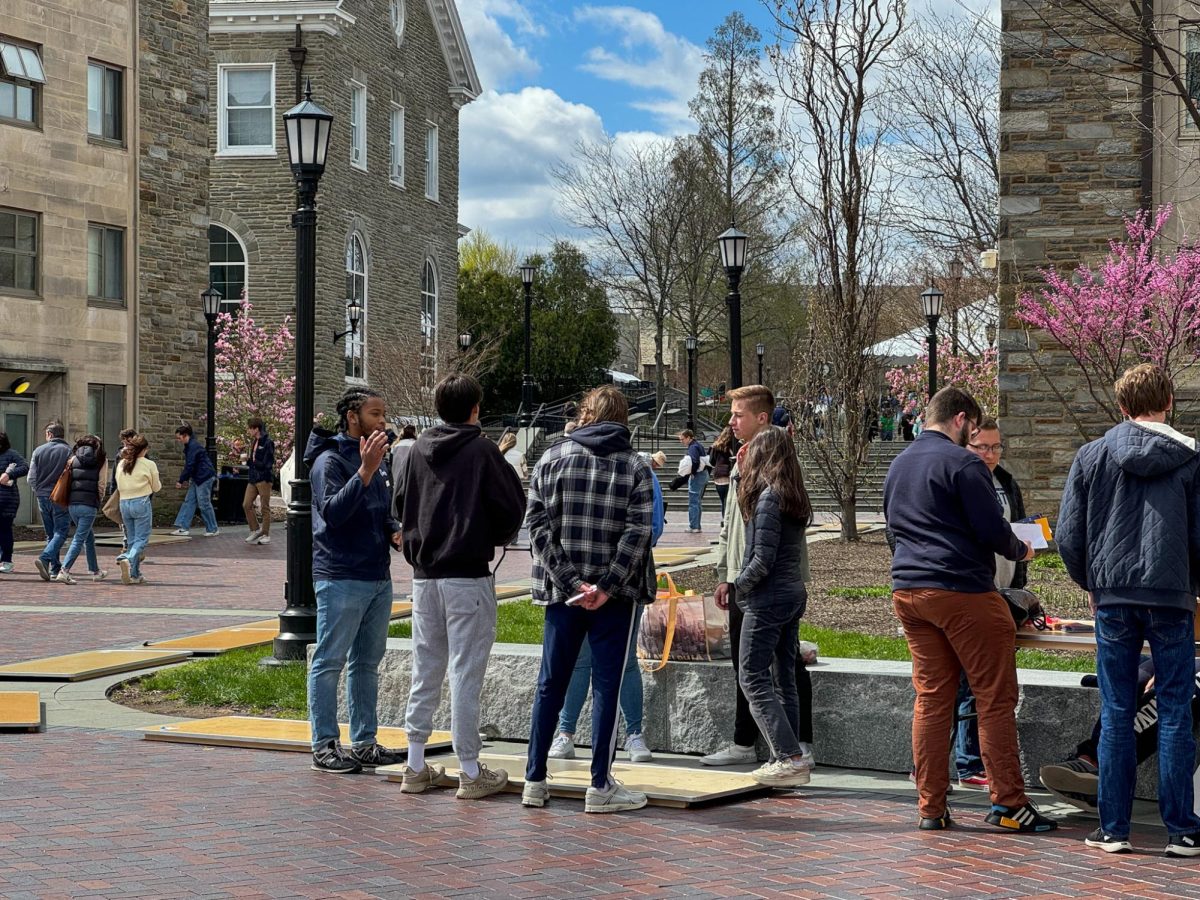On Oct. 24 in the St. Augustine Center for Liberal Arts, an event ensued where Anelise Shrout, associate professor at Bates College spoke about her historical analysis within her book. She gave background about the Great Famine and streamlined that into international philanthropy.
A key background point is the Irish potato crops began to increasingly fail in 1845 to 1849. Those years became a crucial period of Irish starvation, known as the Great Famine. The news of this famine traveled, reaching Great Britain, America and other areas of the world. People then became involved in aid relief for the Irish. Groups such as: lower income people, enslaved people, tenants, southern plantation owners, and politicians were involved. People in powerful positions saw this as an opportunity. That opportunity being, investing in Ireland gave them a political advancement.
This famine is considered to be a trademark for global aid relief. It was new to be helping others across the globe in various ways. Instead of utilizing goodness to help others, people took advantage of it. Notably, enslavers attempted to be seen as benevolent by capitalizing off of the famine.
Enslavers attempted to convey the famine occurring in Ireland as equivalent to their struggles. They wanted to utilize Irish suffering, to justify slavery and make themselves out to be victims. They go as far to insinuate they are worse off than the Irish, because the Irish could immigrate whereas they could not easily expand slavery.
“Food was often a sight of resistance on plantations,” Shrout said.
Morgan Smith (an enslaver/plantation owner) of LowndesBoro, Alabama called upon enslaved people to give up one meal a day for the starving Irish. He wanted to make himself “look good” to society. The enslaved people decided to say no and stated a different way to help. They would collect money to donate. In doing so they gained back some of their stripped autonomy.
“The money itself had significance,” Shrout expressed to the audience.
It emphasized how taking a stand and saying no to Morgan Smith was noble and dangerous of the enslaved people. They could have faced physical or verbal repercussions for that. Also collecting money was a crime for enslaved people. They were not allowed to be paid for their labor, but they collected the funds anyway. They brought together 50 dollars, which is equivalent to 1000 dollars today. This was an impactful act of selflessness. They could have used the money for personal artifacts, but they found a way to stand up for themselves and give aid to others.
Multiple groups of individuals subjected to their own hardships, still choose to send money to Ireland. The amounts were small, but they were significant. It displays how people saw themselves in the Irish and wanted to give. Making this famine an international relation between others. These donations were not only giving but an act of solidarity with the Irish. They wanted to attempt to help them through this disastrous famine.
A famine that still has distressing affects to this day. Today’s population of Ireland is credited to the famine.
“The island of Ireland’s population today is still less than it was before the famine” Shrout said.
Shrout greatly conveyed a captivating historical analysis of Ireland and humanity. This talk delved deep into selfless action, humanity, crisis, and more. Most of all it expressed the relevance that it has today. Transnational Philanthropy has a history, which can be connected to modern advocacy of today.
As a student in the audience, it was enlightening to hear of these various topics and intersections within them.
“The talk was very illuminating on the power dynamics at lay in regards to Morgan Smith manipulating the slaves he owned into contributing to the relief and using that to position himself as benevolent and charitable, which emphasizes the argument Shrout made about how people used providing relief for the famine as reflection of the global politics of Slavery,” Villanova upperclassmen, Sonia Singh, said.







